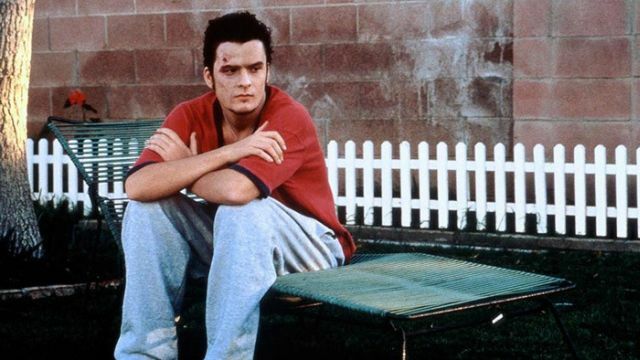 Mankind has always faced with problems associated with mental instability of the person, but in recent years such manifestations of the state in people are encountered much more often.
Mankind has always faced with problems associated with mental instability of the person, but in recent years such manifestations of the state in people are encountered much more often.
Such contrasts of mood are connected, first of all, with genetic predisposition, psychological situation in the family, but also the modern pace of life also left a mark on the way of life of each individual person.
Such constancy of mood changes from depression to high spirits and vice versa neurologists denote cyclothymia. This disease is part of a manic-depressive psychosis, only manifesting itself in a more mild form.
Contents
- Classification of the disorder
- Causes and pathogenesis of the disorder
- Features of the clinical picture
- Depressive phase
- Presence of hypomania
- Diagnosis and treatment
- Prevention and consequences
Classification of the disorder
The mild forms of depressive state in cyclothymia are termed as dysthymic depression, and high spirits are commonly defined as hypertension. The manifestations of these forms are displayed in the form of an alternation of the indicated states, which can proceed continuously, or maybe after a while. These intervals between the manifestations are the mental health of the patient.
Cyclotemia involves the following forms of depression: 
- vital - is also referred to as a melancholic or endogenous form and manifests itself in deep anguish, heavy physical condition, mental pain, constriction and burning in the heart, pressure sensations and much more;
- apathetic form fixes a decrease in motivation and vitality, when there is limited mimicry, slowed motor activity and monotony of the speech apparatus;
- anesthetic - accompanied by an erased psychomotor retardation or fussiness, as well as a painful sense of alienation of emotions.
The manifestation of one form or another depends on the nature and psychopathological factors of the individual patient.
Modern medicine has long been familiar with the notion of manic-depressive psychosis, which belongs to a separate field of knowledge, and cyclothymia after the discovery of this state has become part of the psychotic and nonpsychotic forms of disorders related to their bipolar species. Such disorders affect the emotional component of patients.
Causes and pathogenesis of
disorder Although the mood of patients may be related to external effects, cyclothymia, in most cases, is manifested due to a predisposition to this kind of disorder that can be inherited. According to static data, a third of patients have relatives suffering from this ailment.
Conditions in the family can affect the occurrence of cyclothymia, respectively, psychosocial factors are as follows:
- child psychological trauma;
- is a fixation on the time of infantile development.
External reality is not recognized by such patients, and the presence of such a sign indicates a protective mechanism.
Features of the clinical picture
Cyclothymia can manifest as follows:
- wavy course of the disease, when relatively uniform fluctuations are produced, expressed in the growth and decrease of phases;
- episodic course - is expressed in episodes that go together with the recovery of normal health.
 In addition, cyclothymic depression in a healthy person can also be caused by the active use of artificial diets when deficient in L-tryptophan. Such an important substance is the precursor of serotonin, without which the body is harder to cope with negative factors.
In addition, cyclothymic depression in a healthy person can also be caused by the active use of artificial diets when deficient in L-tryptophan. Such an important substance is the precursor of serotonin, without which the body is harder to cope with negative factors.
Cyclothymic symptoms are characterized by suddenness, respectively, the transition from one mood to another can take only a few hours.
Depressive phase
Each phase has certain symptoms, and in the case of a depressive direction, the following is emphasized:
- a decreased activity is observed, which is often expressed in inhibitory movements;
- the patient lost interest in communication, besides there is a longing, depression, apathy or another;
- significantly worsens the concentration of attention, reduces the level of motivation, there is wine, and yet everything is aggravated by low self-esteem;
- manifestation of irritability, increased fatigue, inner dissatisfaction and helplessness;
- sleep, appetite and sexual instinct are violated;
- becomes unbearable logical thinking or the assimilation of a new information flow that the patient is fully aware of.
Presence of hypomania
In contrast to depression, hypomania is expressed in the following symptoms: 
- increased activity and energy;
- high level of working capacity, because of what sleep can suffer;
- exaggerated self-esteem;
- reassessment of past achievements;
- increased interest in all sorts of hobbies.
This phase does not exclude the appearance of anger, and also it is possible to note the rudeness in behavior. If there are any three criteria from each phase, then cyclotimia can be diagnosed.
Diagnosis and treatment of
The diagnostic picture of cyclothymia is formed on the basis of complaints received from the patient himself, an examination by a neurologist and observations recorded by a psychotherapist. The diagnosis is made on the basis of cyclical mood changes, in which there may be no period of normal state.
At least two years in a patient with cyclothymia, the hypomanic conditions, intersecting with depressive mood, should be stable. Adolescents and children in the diagnosis of the disease are subject to cyclical fluctuations throughout the year.
As an additional diagnosis, usually bipolar disorder appears, because on the background of cyclothymia, attacks of manic or severe depressive nature may develop.
When choosing the optimal treatment tactics, the observing physician relies on the development of one or another episode that is currently taking place. This is explained by the fact that the therapeutic effect should concern the suspension of the current malaise and the prevention of relapse in the future.
 In the case when the doctor does not observe the critical condition of the patient, the treatment of cyclotomy can also be performed on an outpatient basis, with suitable antidepressants prescribed.
In the case when the doctor does not observe the critical condition of the patient, the treatment of cyclotomy can also be performed on an outpatient basis, with suitable antidepressants prescribed.
Intensive therapy combines the combination of the use of psychotropic drugs and psychotherapy. Psychotropic medications, as a rule, have a positive dynamics in terms of mood of the patient, and psychotherapeutic techniques are able to bring the patient's life more confident, and also will allow you to cope with your own thoughts and feelings.
In most cases, cyclothymia is treated at home, because there is such a factor as inaction and it is aggravated within the hospital, which negatively affects the patient's well-being. When hospitalization is mandatory, stay in a medical facility will be limited.
Undoubtedly, the process of recovery is influenced by such factor as the patient's desire to restore the normal state as soon as possible.
Accordingly, in this position plays a big role a positive attitude, combined with the support of close people. During this period, difficulties can arise with the use of psychotropic medicines, because a patient already in the first month of treatment may have a feeling that antidepressants cause irreparable damage to his consciousness.
This can be directly influenced by others, approving all the motives for restoring health.
Prevention and consequences of
- To avoid recurrence as preventive measures, the following is recommended:
- the passage of a full course of medicines;
- exclusion of all bad habits;
- observance of emotional and physical rest;
- regularity of visiting the supervising physician.
The adverse effects of cyclothymia are those that attach schizophrenic inclusions to the disease, which were manifested at an early age. Negative affects also massive pathoplastic-psychogenic stratifications. It is noted that individual phases of the disease may extend in old age.
Thus, cope with such a difficult disease as cyclothymia is quite realistic, the main thing is to observe the discipline of treatment, which is achieved through the support of others, including a doctor, seeking to establish a trusting relationship with the patient.



